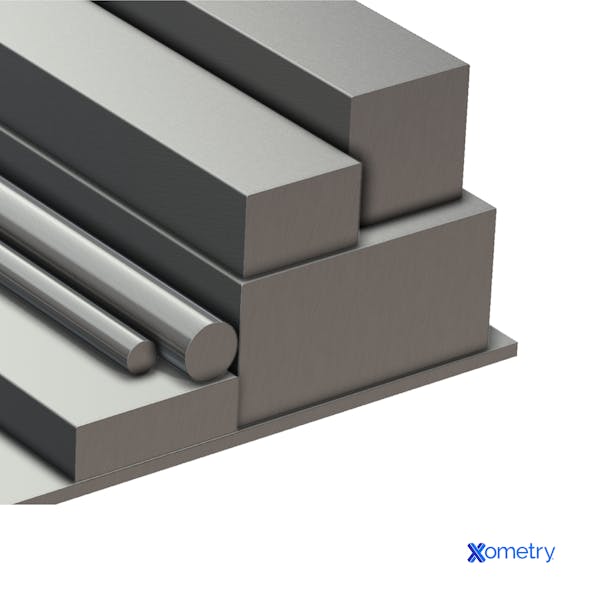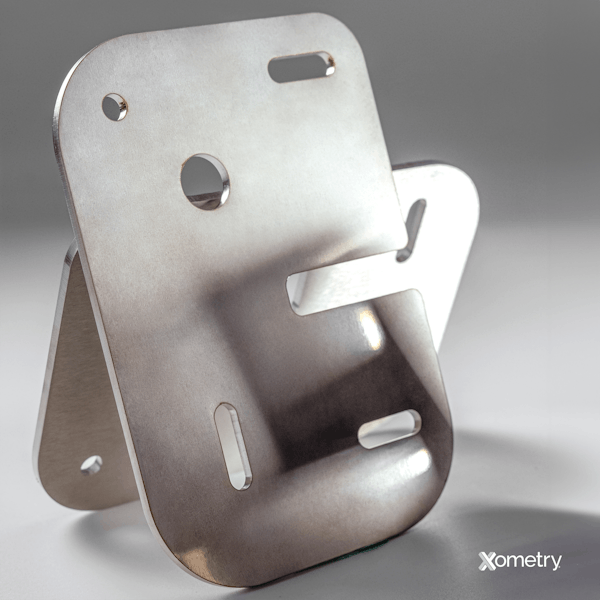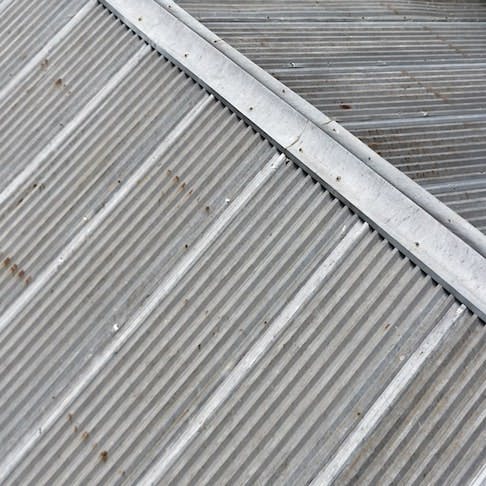As one of the most prominent steels used today, mild steel is known for being highly machinable and reasonably priced. It’s also ductile and weldable, which is why it’s a hit in many industries, like construction and automotive. Let’s learn more about this useful metal.
What is Mild Steel?
Also known as low-carbon steel, mild steel is an iron with a carbon content of up to 0.2%. It might have other alloying elements in it, but carbon is the main one here. There are different grades of this steel type, and each one has a different carbon content—the more carbon a grade has, the stronger it will be, but it will sacrifice some of its ductility. Manufacturers also like to play around with other properties like tensile strength, corrosion resistance, and wear resistance by throwing other elements in the mix, like manganese, for example.
You can recognize mild steel by its four-digit AISI (American Iron and Steel Institute) classification codes because they usually start with a 10 and end with two numbers that are less than 20, which shows roughly how much carbon it contains in hundredths. Most of these types of steel have low quantities of phosphorus and sulfur—usually under one percent—but they’re considered impurities, so keeping them low is a must. It’s used to make things like auto bodies, furniture, wire, rebar, and fasteners, and stronger versions are often made into structures and storage tank plating. Here’s an example of some bars made from this material:

What Is the Composition of Mild Steel?
Mild steel is made up of an iron (Fe) base with the addition of small amounts of carbon. Low-carbon steel is typically defined as having less than 0.2 % carbon by ASM International. Different grades of mild steel are defined by their differing levels of carbon. Another common alloying element is manganese (Mn).
What Are the Different Grades of Mild Steel?
We’ve listed some of the most traditional grades of mild steel in this table:
| ANSI Classification | Equivalent (approx) | Description |
|---|---|---|
ANSI Classification 1008 | Equivalent (approx) DIN 1.0204 | Description Excellent cold formability |
ANSI Classification 1010 | Equivalent (approx) DIN 1.0301 | Description Low strength, used for magnet cores |
ANSI Classification 1015 | Equivalent (approx) DIN 1.0401 | Description Wear-resistant, good machinability |
ANSI Classification 1018 | Equivalent (approx) DIN 1.0419 | Description Great for carburizing applications, good machinability |
ANSI Classification 1020 | Equivalent (approx) DIN 1.0044 | Description Good mix of strength and ductility |
Grades of Mild Steel
The following image shows some plates made from mild steel:

Where Is Mild Steel Used?
Mild steel is a general-purpose material that can be found in most industries. Some typical applications include: car bodies, furniture, wire, rebar, and fasteners. Higher strength mild steel is used for structures and storage tank plating.
How Much Carbon Is in Mild Steel?
The amount of carbon in mild steel is less than 0.2 % by weight. According to AISI (American Iron and Steel Institute), low-carbon steel is a type of mild steel.
What Are the Mechanical Properties of Mild Steel?
The below table provides all of the important information mechanical properties for the most common types of mild steel.
| Type | Modulus of Elasticity (GPa) | Brinell Hardness | Ultimate Tensile Strength (MPa) | Yield Strength (MPa) | Elongation at Break | Steel Density (kg/m3) |
|---|---|---|---|---|---|---|
Type AISI 1008 | Modulus of Elasticity (GPa) 200 | Brinell Hardness $95.00 | Ultimate Tensile Strength (MPa) 340 | Yield Strength (MPa) 285 | Elongation at Break 20% | Steel Density (kg/m3) 7.87 |
Type AISI 1010 | Modulus of Elasticity (GPa) 205 | Brinell Hardness $105 | Ultimate Tensile Strength (MPa) 365 | Yield Strength (MPa) 305 | Elongation at Break 20% | Steel Density (kg/m3) 7.87 |
Type AISI 1015 | Modulus of Elasticity (GPa) 205 | Brinell Hardness 111 | Ultimate Tensile Strength (MPa) 385 | Yield Strength (MPa) 325 | Elongation at Break 18% | Steel Density (kg/m3) 7.87 |
Type AISI 1018 | Modulus of Elasticity (GPa) 205 | Brinell Hardness 126 | Ultimate Tensile Strength (MPa) 440 | Yield Strength (MPa) 370 | Elongation at Break 15% | Steel Density (kg/m3) 7.87 |
Type AISI 1020 | Modulus of Elasticity (GPa) 186 | Brinell Hardness $121 | Ultimate Tensile Strength (MPa) 420 | Yield Strength (MPa) 350 | Elongation at Break 15% | Steel Density (kg/m3) 7.87 |
Type S275 J0 | Modulus of Elasticity (GPa) 205 | Brinell Hardness 121 | Ultimate Tensile Strength (MPa) 430–580 | Yield Strength (MPa) 275 | Elongation at Break 21% | Steel Density (kg/m3) 7.85 |
Type S355 J0 | Modulus of Elasticity (GPa) 210 | Brinell Hardness 146 | Ultimate Tensile Strength (MPa) 510–680 | Yield Strength (MPa) 355 | Elongation at Break 20% | Steel Density (kg/m3) 7.8 |
Mild Steel Mechanical Properties. Table Credit: http://matweb.com
| Classification | Carbon Content (% Weight) | Secondary Alloying Elements (% Weight) |
|---|---|---|
Classification AISI 1008 | Carbon Content
(% Weight) <0.1 | Secondary Alloying Elements
(% Weight) 0.3 to 0.5 Mn; 0.04 P; 0.05 S |
Classification AISI 1010 | Carbon Content
(% Weight) 0.08 to 0.13 | Secondary Alloying Elements
(% Weight) 0.3 to 0.6 Mn; 0.04 P; 0.05 S |
Classification AISI 1015 | Carbon Content
(% Weight) 0.13 to 0.18 | Secondary Alloying Elements
(% Weight) 0.3 to 0.6 Mn; 0.04 P; 0.05 S |
Classification AISI 1018 | Carbon Content
(% Weight) 0.14 to 0.2 | Secondary Alloying Elements
(% Weight) 0.6 to 0.9 Mn; 0.04 P; 0.05 S |
Classification AISI 1020 | Carbon Content
(% Weight) 0.17 to 0.23 | Secondary Alloying Elements
(% Weight) 0.3 to 0.6 Mn; 0.04 P; 0.05 S |
Classification S275 | Carbon Content
(% Weight) 0.18 | Secondary Alloying Elements
(% Weight) 1.5 Mn; 0.030 P; 0.030 S; 0.012 N; 0.55 Cu |
Classification S355 | Carbon Content
(% Weight) 0.2 | Secondary Alloying Elements
(% Weight) 1.6 Mn; 0.030 P; 0.030 S; 0.012 N; 0.55 Cu |
Chemical Composition of Mild Steel
What Is the Density of Mild Steel?
The density of all grades of mild steel hovers near 7.8 c/cm3. This is because the density of mild steel, which is more than 98% iron, is dominated by the density of iron (7.87 g/cm3). Alloys that fit under the mild steel umbrella that contain small amounts of alloying elements other than iron will have slightly different densities.
What Is the Toughness of Mild Steel?
Mild steel is both ductile and strong and is, therefore, a very tough material. The toughness of mild steel varies according to the type and classification. Toughness is defined as how much energy can be absorbed without fracture. It is calculated as the area beneath a material's stress-strain curve as defined up to the fracture point. The mechanical property commonly used to define a material's toughness is the Charpy impact strength. For 1020, for example, the Charpy impact strength would be 24 J at 10 °C.
Frequently Asked Questions on Mild Steel
What Are the Environmental Impacts of Mild Steel?
It’s recyclable, so it’s environmentally friendly. The steel industry in general, is working hard to adopt sustainable practices, like reducing greenhouse gas emissions during production. The main things that continue to negatively impact the environment as of yet are the extraction of raw materials like iron ore and the energy-intensive manufacturing processes.
Which Mild Steel Grade Is the Strongest?
The strongest grade is 1020. This grade also has the highest carbon content, which aside from making it very strong, makes it much less ductile.
What Is Mild Steel's High Melting Point?
This will vary based on the carbon and alloy content in any given grade, but generally speaking, the temperature at which mild steel becomes completely liquid ranges between 1450–1530°C.
Is Mild Steel Suitable for Welding?
Yes, mild steel is suitable for welding. Grades with additional silicon and manganese further improve the weldability of mild steel. Mild steel’s weldability is one of the reasons for its widespread use as it can be easily welded on site with a simple stick welding machine (Shielded Metal Arc Welding) using ER70S-3 & ER70S-6 rods.
How Xometry Can Help
To learn more about mild steel, or any other metal or material, you can reach out to one of our representatives. Xometry provides lots of services for all your manufacturing, prototyping, and production needs, including CNC machining, 3D printing, and laser cutting. Visit our website to learn more, or upload your designs to the Xometry Instant Quoting Engine® and get started straight away.
Disclaimer
The content appearing on this webpage is for informational purposes only. Xometry makes no representation or warranty of any kind, be it expressed or implied, as to the accuracy, completeness, or validity of the information. Any performance parameters, geometric tolerances, specific design features, quality and types of materials, or processes should not be inferred to represent what will be delivered by third-party suppliers or manufacturers through Xometry’s network. Buyers seeking quotes for parts are responsible for defining the specific requirements for those parts. Please refer to our terms and conditions for more information.


